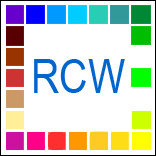Hi Paul,
Your question/answer was found in the link,
http://www.realcolorwheel.com/final.htmby searching for the word tempera.
CASEIN-TEMPERA-EMULSION
There are two types of casein tempera paints, both very strong glues, casein with lime is so strong that if it's not diluted very thin with 5 parts water, it could pull an old thin coat of plaster off a lower coat. Casein sets quickly, simi-mat, and transparent, all of the pigment is exposed, making a very luminous surface. Casein should be prepared fresh daily, in small quantities instead of depending on preservatives which effect there painting qualities. (Dry) Lime combines with casein or egg yolk to make a weatherproof mural paint. Use only pigments that can stand up to lye, some vegetable dyes will bleach out.
Start with fresh skim milk curd and add four times as much slaked lime to make a paste. This is the glue the wood workers use on furniture. This is also the casein lime medium, mix the pigments in some thin paste to paint with. Casein medium will emulsify egg, mastic, balsam and wax soap. Oil will emulsify also but will quickly turn yellow, stand oil is better suited.
Casein powder is available in two types, pure dried curd, which is insoluble in water but is soluble in ammonia and mono ammonium caseinate, which will dissolve in water. If it chunks up because it's old, add some ammonia. It doesn't take much ammonia water to dissolve either fresh curd or the powdered pure curd, soak the pure powdered curd for a few hours before adding the ammonia, 1/5 its volume over moderate heat will cause the effervescent reaction. When the reaction resides the casein will be in a colloidal state, stir it until it's cool. Casein is still strong when it's water thin.
Thin a shellac size to apply an intermediate sealing coat to a casein painting or it will soak up an oil glaze like a blotter.
Casein and lead mix well together, combining this white with an oil white makes a fast drying white for water or oil, whichever has the higher concentration. Copper colors turn blue in ammonia.
1200, TECHNIQUE,
Russian icons on wood were painted in egg-distempera, without oil. Their artists were taught by the Byzantine, who could work in glazed tile not just on parchment or wood. The Russian's would paint icons on wood for the next five centuries.
1300,
The support panel was coated with glue then canvas. Glue, gypsum or clay and lead white was the ground, another medium was egg with fig juice and water, a basic tempera.
The drawing was applied in Green Veronese Earth [iron], leaving white to be modeled both warm and cool. A darker green was made with burnt green earth, also Lamp Black and Yellow Ocher mixed. Sinopis and Cinabrese were the red earths.
Three graded tones to dark rounded and modeled everything. They also had boiled and sun dried linseed oil for glazing over the tempera. Sandarac (sandracca), was a final glaze. Giotto sometimes glazed in mastic over egg but he didn't mix them together. More mastic or oil than egg would make it turpentine based, a less advantageous mix.
For in depth information, go to this egg tempera paintings page.
http://www.realcolorwheel.com/eggtempera.htm

 Home
Home

 Help
Help

 Search
Search

 Login
Login

 Register
Register

 Broadcast Message to Admin(s)
Broadcast Message to Admin(s)

 « Home
« Home  ‹ Board
‹ Board  Top of this page
Top of this page 
 Pages: 1
Pages: 1

